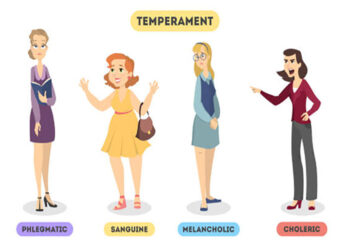
Our hair is related to a lot of cultural and social importance and is often associated with feminine beauty and male virility. Hair helps present a person’s gender expression and improve their self-esteem, as long hair is often associated with the female gender, whereas shorter hair is more significant for males.
Asides from beauty and expression of gender, the hair helps to insulate our bodies against heat loss and also prevents direct skin contact with certain chemicals that may irritate the skin. Thus, problems relating to hair loss can be detrimental to a person’s self-esteem, confidence, and mental well-being, as well as their physical health and protection from the environment. Hair also has some sensory functions.
Hair loss can be genetic or acquired. Some people have a genetic predisposition to develop hair loss. However, if you are observing hair loss on your head, or you are suspecting a possible hair loss, you will see some options on how to improve the condition of your hair and scalp.
Furthermore, you will learn about the causes of hair loss, the presentations of hair loss, and treatment options for hair loss. Keep reading.
Alopecia: What causes hair loss
Medically, hair loss is also known as ‘alopecia’ or balding. Alopecia can be defined as the loss of hair from areas of the body where hair normally grows. These include the scalp, the chest, the pubis, the armpits, etc. The areas of hair distribution differ for both men and women but areas like the palm, lips and soles and hairless in both sexes.
Hair loss or alopecia could be related to various causes. These can be classified into two main categories:
- Hereditary alopecia.
- Acquired alopecia.
Hereditary alopecia is a type of hair loss that runs in families but is more common in males than in females. You can be said to have hereditary alopecia if one or both of your parents had areas of hair loss without any known physical cause. Age is a factor to consider in hereditary hair loss. Individuals in some families start to experience natural balding when they attain a certain age.
Acquired alopecia is a type of hair loss that is due to external factors, chemicals, physical injury, autoimmune causes, burns, or bad hair care habits, including manual pulling of hair.
Based on the extent of balding, autoimmune hair loss can be classified into partial alopecia (alopecia areata) and complete alopecia (alopecia totalis), alopecia universalis, and alopecia barbae. Autoimmune hair loss is due to immune action by one’s own immune cells against one’s own hair follicles. This may be hereditary.
Alopecia areata is caused by an autoimmune disease process affecting the hair follicles resulting in patchy hair loss, especially on the scalp.
Alopecia totalis is hair loss on the entire surface of the scalp. It could be due to hereditary, autoimmune, or other causes.
Alopecia universalis is hair loss from all parts of the body including the eyelashes and eyebrows. This is considered the most advanced form of alopecia areata. Other causes of alopecia totalis and alopecia universalis include cancer chemotherapy. Cancer patients suffer from alopecia because cancer chemotherapy can interfere with hair follicle viability.
Behavioural causes of hair loss
These are other causes of hair loss that are related to one’s behaviours or cosmetic activities. In a bid to take care of the hair, some people apply interventions that end up damaging the hair resulting in poor hair growth or hair loss. These include; using shampoos that contain extremely harsh chemicals, excessive heat styling, tight hair styling which can cause pulling of hair, applying too much pressure when brushing your hair, inadequate hair conditioning, rinsing hair with steaming hot water, and other damaging hair care habits.
Symptoms and presentations of hair loss
Anyone, including yourself, can tell when you are having excessive hair loss. Hair loss shows when you look in the mirror, except if it is occurring at the back of your head. Important early signs of hair loss include the following:
- Receding hairline
- Gradual thinning of your hair
- Obvious growing bald spot
- Patchy bald spots
While these may be obvious to anyone, it is important to see your doctor or dermatologist for an accurate diagnosis of alopecia and what its cause would be. Your healthcare provider will look through several aspects in order to arrive at a working diagnosis of your condition and what you can do next.
Treatment options for hair loss
Treatments for baldness are available and they are tailored according to the specific cause and triggers. Hair loss treatments are aimed at encouraging hair regrowth, removing the offending chemical, or hair transplant.
1. Medications – Finasteride and Minoxidil
Finasteride can help you regrow your hair if you are having alopecia but it is a prescription-only pill. That means it is not available over the counter and you first need to see your doctor to get a prescription. You can then buy Finasteride at an average price of $0.64 per pill which is often prescribed as one pill a day but this may be changed depending on your doctor’s evaluations. You can also get coupons from online marketplaces to purchase the medication at a discounted price.
Minoxidil is a rub-on treatment that you can buy from the local pharmacy for the treatment of hair loss. Minoxidil is also used as an antihypertensive. It is available as a lotion or tablet for the treatment of hair loss or alopecia.
Minoxidil is effective during the early stages of hair loss, applied twice daily to the scalp while it is dry, and continued for at least 6 months once started. If hair treatment shows signs of success with this topical cream, it should be continued to maintain the effect. Sometimes, a low-does minoxidil tablet can also be prescribed.
2. Platelet-rich plasma (PRP)
PRP is a component of blood called plasma, which is the clear liquid part of blood without the blood cells. The process of obtaining PRP involves apheresis of blood to separate plasma from blood without removing the platelets components. This component of blood is rich in growth factors that can encourage hair growth.
The procedure is carried out by injecting separated platelet-rich plasma from your blood into the scalp by your healthcare provider. The duration and maintenance of the treatment sessions will vary depending on your doctor’s advice.
3. Hair transplant surgery
This is a surgical treatment where doctors will directly move hair to the bald area of your head. This can be done in different ways, but the more common way is that doctors remove strands of your hair from the thicker area of your scalp. Then, transplant them to areas where your hair is the thinnest.
4. Laser therapy
Laser therapy exposes your scalp to low-dose laser treatments to revive the circulation and stimulation to encourage your hair follicles to regrow. However, the effectiveness varies by people, and the results may be successful for some, but they may not work for you. Again, an expert’s advice is necessary before you make any decisions relating to laser hair therapy.
Additionally, remember that treatments can help some of your hair grow back and prevent more strands from falling out. However, you might not get the optimum condition of your hair before, and not all treatments might work for you. Contact your healthcare provider for consultations and assistance.
Prevention of hair loss
Baldness can be prevented except if due to hereditary. Fortunately, there are various ways to do so. Aside from that, if you want to maintain your hair as healthy as possible, you need to make a few lifestyle changes to improve your condition.
Here’s a brief list of things you can do to name a few:
- Proper Hair Care: Taking care of your hair goes a long way. Moreover, in the case of hair loss, there can be a lot of factors for this problem. So, the best way to prevent hair loss is to take better care of your hair. Try to convert to milder shampoos and other hair products, and prevent tying your hair very tightly to prevent pulling the strands from your scalp.
- Balanced and Healthy Diet: Hair loss is often related to your health, which means an unhealthy diet can cause this condition. In particular, iron, protein, vitamins B12 and D, and other nutrients can result in such problems. So, the best thing you can do is to eat enough healthy meals that provide such vitamins and minerals.
- Ask Your Doctor for Supplements: Aside from eating healthily, your healthcare provider may also provide you with supplements that can help optimize hair regrowth and a stronger scalp. It’s best to visit them so they can check up on your hair’s condition and prescribe or recommend the appropriate supplements that suit your condition.
Final words
Hair is a significant factor in a person’s self-esteem and confidence. So, you should take proper care of it and make necessary doctor’s visits to ensure you’re not experiencing underlying health issues. As hair loss issues can be preventable, it’s best to understand how to prevent them. But if the hair loss has already occurred, or if it is due to some factors you cannot easily control, there are treatment options available as discussed above.
















